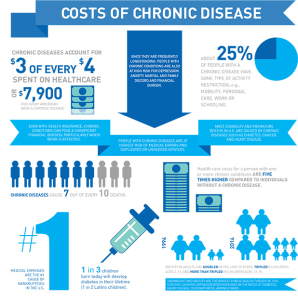Chronic care management is a demanding aspect of healthcare. It requires extensive coordination, documentation, and communication between healthcare professionals. Therefore, it’s a good thing EMR software has emerged as a transformative solution, simplifying and streamlining workflows for healthcare providers. In this blog, we explore the features and functionalities of EHR systems that enhance doctors’ ability to provide high-quality care.
Efficient Documentation and Record-Keeping
Chronic care management EMR software automates the documentation process. This allows doctors to save time and effort in maintaining accurate patient records. Some key features are:
Centralized Patient Data – EMR software consolidates all forms of patient information into a single digital platform. Doctors can access and update this information conveniently, eliminating the need for manual record-keeping and reducing the risk of errors.
Templates and Customization – EHR software provides pre-designed templates and customizable forms aligned with chronic care management. As a result, doctors can efficiently document patient encounters and track progress. Furthermore, they can capture important images and details specific to each chronic condition.
Automated Coding and Billing – Moreover, EMR systems automate coding and billing processes, reducing administrative burdens. With built-in guidelines and an intuitive interface, the software simplifies the documentation of services.
Care Coordination and Communication in Chronic Care Management
Effective care coordination is vital in chronic care management. This is why EMR software facilitates seamless collaboration among healthcare professionals.
Care Team Collaboration – Chronic care patients often consult more than one doctor from more than one clinic. Real-time messaging, task assignments, and shared calendars are some of the key communication features in EMR systems. It enables efficient, real-time communication across specialties and providers. As a result, decision-making is faster and more inclusive of all aspects of a patient’s case.
Referral Management – EMR software streamlines the referral process by providing easy access to specialist directories. Moreover, automated referral requests and tracking functions help doctors efficiently manage referrals and track progress. This ensures seamless continuity of chronic care.
Interoperability with External Systems – EMR software’s integration with external systems, such as labs and pharmacies, enables seamless exchange of information. Doctors can access lab results, prescribe medications, and receive updates, enhancing efficiency and reducing delays.
Advanced Decision Support
Finally, chronic care management EMR software offers advanced decision support tools that assist doctors in delivering evidence-based care.
Clinical Decision Support Systems (CDSS) – EMR software effectively integrates CDSS. Consequently, this provides real-time alerts, reminders, and evidence-based guidelines during patient encounters. Doctors can benefit from proactive clinical prompts, reducing medical errors and ensuring adherence to best practices.
Risk Stratification and Population Health Management – EMR software analyzes patient data and identifies high-risk individuals within a population. Doctors can proactively manage these patients. By personalizing care plans, and allocating resources efficiently, they can achieve better health outcomes.
Data Analytics and Reporting – EMR software also provides comprehensive analytics and reporting capabilities. Doctors can gain insights into patient outcomes, population health trends, and quality improvement initiatives. These analytics empower doctors to make data-driven decisions, identify areas for improvement, and enhance overall care delivery.









